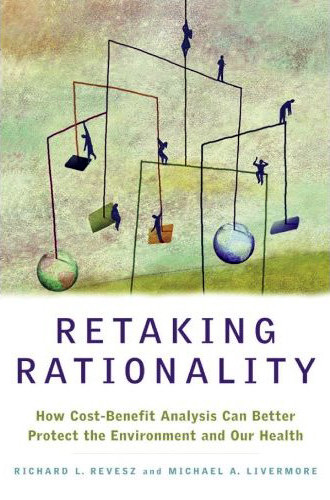-
Comments re: DOL regulations around toxic chemical risks
In August 2008, the Department of Labor (DOL) proposed a sweeping change to the way agencies treat toxic chemical risks in the workplace. The rule, which would change the assumptions about how long workers are exposed to hazardous chemicals, is extremely controversial and prompted an outcry from the public and Congress.
-
Comments in opposition to Physicians’ Conscience Regulation
In August 2008, the Department of Health and Human Services (HHS) proposed a regulation that would expand protections for medical professionals who refuse to provide health care services that they object to on moral grounds.
-
Statement of Principles for HEAP energy relief efforts
Economists know that when the cost of basic goods like energy increase, quality of life of decreases most for people with lower incomes. This is an important issue that government agencies should consider when estimating the effects of regulations.
-
Action on oil and gas drilling regulation
Since 1982, drilling for oil and natural gas has been off-limits along much of our nation’s coastline. But in September 2008, the U.S. Congress allowed the drilling bans to lapse, a decision with profound consequences—both positive and negative—for our nation’s economy and environment. Yet according to congressional staff, legislators did not review a single comprehensive study of potential costs and benefits before casting their votes.
-
Letter to David Paterson re: regulatory review
More than ever before, state governments now undertake an ambitious range of regulatory programs and often become leaders on environmental, health, and safety policies. As states expand their regulatory reach, it becomes increasingly important to ensure that statewide regulatory decisions are efficient, consistent, fair, and justified.
-

Cause or Cure?
Cost-Benefit Analysis and Regulatory Gridlock
In Cause or Cure?: Cost-Benefit Analysis and Regulatory Gridlock, Michael A. Livermore argues that cost-benefit analysis can be used to overcome regulatory paralysis. An earlier version of this working paper was presented at the Breaking the Logjam Conference at NYU Law in the spring of 2008.
-
Letter to the OMB re: midnight regulations
Agencies are infamous for pushing through regulations on the eve of an Administration’s exit. In May 2008, the Bush Administration issued a bulletin mandating that no regulations were to be proposed after June 1, 2008, except in extraordinary circumstances.
-
Comments on New York’s GORR cost-benefit analysis guidelines
For the first time in a dozen years, the New York State Governor’s Office of Regulatory Reform (GORR) has begun to update its guidelines for how state agencies should conduct cost-benefit analysis. This update seeks to transform what had been an infrequently and inconsistently used technique in New York into a more standard and powerful decisionmaking tool.
-

Retaking Rationality
How Cost-Benefit Analysis Can Better Protect the Environment and Our Health
In Retaking Rationality: How Cost-Benefit Analysis Can Better Protect the Environment and Our Health (Oxford University Press, 2008), Dean Richard L. Revesz and Michael A. Livermore argue for a more rational approach to cost-benefit analysis and regulation. They show how traditional cost-benefit analysis tends to overestimate costs and underestimate benefits, leading to less-than-optimal levels of regulation.
